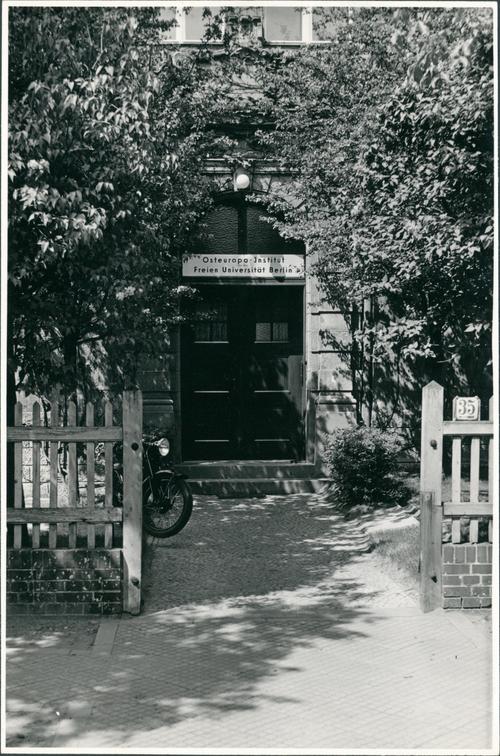Ehrenbergstraße 35
After the Second World War, research on Eastern Europe in Germany was initially discredited by the völkisch-oriented "Ostforschung". Ostforschung" was primarily devoted to "Germanness" in Eastern Europe and postulated its superiority over the Slavic population and the "Eastern Jews". During the Second World War, it then provided an apparently scientific foundation for the Nazi policy of extermination in the occupied eastern territories. Thus, after 1945, it was necessary to distance oneself from this "Ostforschung" and to develop new perspectives for research on Eastern Europe. These were to be oriented to the new realities of the Cold War. However, at the ceremony marking the founding of the Osteuropa-Institut on November 24, 1951, the governing mayor Ernst Reuter noted in his speech that an awareness also had to be created that the countries behind the Iron Curtain "belonged to Europe and that the Institute should contribute to forging a bond with the Eastern European peoples and point the way to a better future". The Institute for Eastern European Studies remains committed to this mission to this day.
